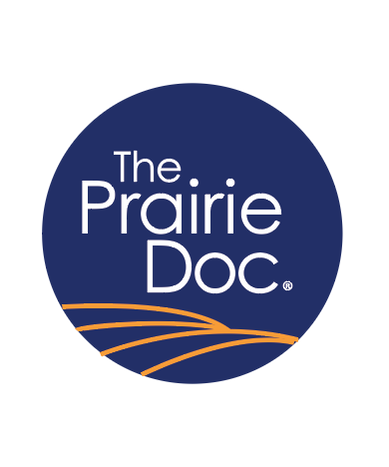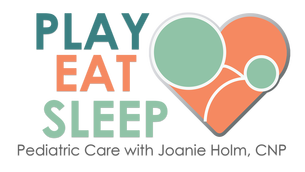|
Prairie Doc Perspective
Week of January 28, 2024 “Why Routine Dental Visits Matter” By John Bisson, DDS Routine visits to the dentist are key to maintaining overall health. Preventive dental care starts at home. We advise patients to brush twice a day, usually in the morning and before bed, for two minutes followed by flossing. Eating healthy is also crucial to maintaining oral health. Sugary foods and beverages are key factors in tooth decay. Acid is produced when the bacteria in your mouth break down sugar. That acid dissolves the tooth surface leading to tooth decay. Preventive dental care continues by visiting the dentist regularly, ideally every six months. Those with a high risk of tooth decay, periodontal disease, and bone loss may need to visit more often. This high-risk group includes smokers, diabetics, pregnant women, or individuals with diagnosed periodontal disease. Children should have their first visit to the dentist when the first tooth erupts or by their first birthday, whichever comes first. Routine dental cleanings and exams allow dental professionals to catch potential tooth-related problems early before they become major issues. For example, if a tooth has a small amount of decay, that tooth may be easily saved with a filling. If the tooth decay or fracture goes undetected for months or years, that decay can continue to break down the tooth which could lead to even bigger problems. Untreated cavities can also lead to infections under the gums. These infections can result in more serious systemic infections in the body. In rare cases, these infections can be fatal. Routine dental visits can also be key to detecting certain health issues early on like oral & skin cancer and gum disease. Gum disease has connections to heart disease, diabetes, stroke, and high blood pressure. Dental x-rays can also detect problems below the surface of the tooth or gums before they become bigger issues. Oral issues can develop and progress quickly. It is never too late to begin healthy dental habits. Regular, preventive dental checkups help you avoid the pain, time, and expenses that dental problems can bring with them. John Bisson, DDS is a dentist and owns Bisson Dental in Brookings, SD. Dr. Bisson is originally from Sturgis, SD but moved to Brookings in 2015 and opened Bisson Dental in 2018. For more information about Bisson Dental head here, https://www.bisson-dental.com/. Follow The Prairie Doc® at www.prairiedoc.org and on Facebook featuring On Call with the Prairie Doc® a medical Q&A show providing health information based on science, built on trust, on SDPB and streaming live on Facebook most Thursdays at 7 p.m. central. Prairie Doc Perspective the Week of January 21st, 2024
Even In Darkness You can be Found By Nicola Park LAC, LPC-MH “I’ve lost everything…but I just can’t stop”. “Once I take that first drink that is all I think about”. “I use to take the pain away”. These are some of the many things you might hear someone who struggles on a daily basis with an addiction say. Addiction is a chronic disease that can physically and mentally change a person from who they once were. When we hear the word addiction, we might automatically go to ‘the person on the street looking to score their next fix’, but these are people who struggle every minute of their day to make the unconscious choice to feed this compulsion without thinking of the consequences of what this might do to them or their family. Addiction doesn’t pick and choose, have a ‘type’ or have a criteria, so anyone from any gender, class, race etc. can fall victim to this disorder. In my time at various jobs, I have heard addiction described as their own worst enemy, their best (and only) friend, or the one thing they wish they could take back from their life. Now don’t forget, addiction doesn’t just stop at substances. You will see a wide range including gambling, shopping, eating, pornography and this is only just naming a few that can consume a persons every waking thought. As hopeless as addiction might feel, the good news is there is hope and recovery is possible. Now there might not be a cure for addiction, but with the right tools, you can certainly make positive changes to help maintain prolonged sobriety. Now, I can sit here and say these words quite easily, but the road is far from that. These words are not said to discourage or make you scared, but to give a real perspective that it takes a lot of work, time, dedication and change, but with that, recovery is possible. Whether you choose treatment, AA/NA (and others), other peer support groups, or taking your recovery into your own hands, there are some core components that need to happen to gain a better chance of being successful. You can start doing this by surrounding yourself with positive supports, changing your playgrounds by not frequenting the same places, gaining healthy coping skills and taking it one day at a time. To finish, I always tell my patients, make sure you are addressing your mental health as well as your substance use. A beautiful life is waiting for you, but you just need to take that first step in admitting to yourself you have a problem and asking for help. Nicola Park LAC, LPC-MH is a licensed mental health professional/counselor (LPC-MH) and a licensed addictions counselor (LAC) at Avera Behavioral Health in Sioux Falls. She have been in the counseling field since 2011 and have worked in both inpatient, outpatient, and residential school settings. Ms. Park has a masters in clinical mental health counseling and my bachelors in addictions counseling and psychology. Follow The Prairie Doc® at www.prairiedoc.org and on Facebook featuring On Call with the Prairie Doc® a medical Q&A show providing health information based on science, built on trust, streaming live on Facebook most Thursdays at 7 p.m. central. Jan 18, 2024 | Live
#2218, Sleep Interrupted: Sleep Apnea The Threat in Your Bedroom By Dr. Debra Johnston My family has a fondness for crime dramas and thrillers. It isn't uncommon to watch a scene in which a peacefully sleeping individual wakes when a shadowy figure approaches their bedside with a pillow. Predictably, the assailant calmly presses that pillow over the face of their victim and waits until the struggling stops. For millions of us, the threat in our bedrooms isn't some malevolent other, but rather our own bodies and brains. We may get our next breath, but for those with sleep apnea, it can be a struggle. Sleep apnea has two basic types. In the most common, obstructive sleep apnea, the relaxation of sleep causes some part of the airway to essentially collapse, blocking off airflow. Those afflicted may come to medical attention because their partners complain about their snoring and have to nudge them to prompt that next breath. Their brains have to wake up enough to restore that muscle tone, opening the airway, and allowing them to breathe. This happens repeatedly throughout the night, multiple times an hour. In central sleep apnea, there are problems with the brain sending the instruction to breathe. Some people experience episodes related to both types of apnea, especially as they adjust to treatment for their obstructive sleep apnea, and some people have other types of sleep-disordered breathing. Sleep apnea is a serious condition. It is linked to many other health problems, among them high blood pressure, diabetes, coronary artery disease, heart rhythm abnormalities, heart failure, strokes, depression, and dementia. Even when statistically subtracting out the risk factors that may be common to both sleep apnea and these other conditions, the relationship remains. Of course, there is the obvious risk of accidents caused by dosing off behind the wheel, or in other perilous situations. Then there is the less quantifiable cost, of couples who want to share a bedroom but don't, because the snoring of one partner, or anxiety about that next breath, means neither really sleep. The first step to diagnosing sleep apnea is to visit with your primary care provider. They can determine if you qualify for a home sleep study, or if you might be better off having a test done in a sleep lab, where more monitoring is possible and more complex problems can be detected. Once the diagnosis is confirmed, treatment options can be explored. Most people receive some form of breathing support overnight. This is usually considered the gold standard and is suitable for all forms of sleep apnea. Many of my patients are surprised at just how easily they adjust to using it, and tell me that their partners often will wake them up to put it on if they doze off without it. Many of those who initially struggle with their CPAP can overcome the problems with a dose of determination and the help of a talented sleep therapist. For some people, dental appliances and various surgical procedures are possibilities. I like to remind my patients that sleep deprivation is considered by the UN to be a form of torture. Don't let it be part of your bedtime routine. Debra Johnson, M.D. is part of The Prairie Doc® team of physicians and currently practices family medicine in Brookings, South Dakota. Follow The Prairie Doc® at www.prairiedoc.org and on Facebook featuring On Call with the Prairie Doc® a medical Q&A show providing health information based on science, built on trust for 22 Seasons, streaming live on Facebook most Thursdays at 7 p.m. central. Prairie Doc Perspective Week of January 7th, 2024
“Benefits of Pasteurization” By Andrew Ellsworth, MD My father-in-law is a farmer. He grew up on the family farm in southwest Minnesota, where his dad grew up, too. Blessed by fertile soil, the farm has provided for the family for several generations. It is invaluable for my children to experience the farm, see the crops grow, help with animals, and learn about the cycles of life on the farm. The farm no longer has cows, but it did at one time. My father-in-law used to milk cows. He remembers they had a pasteurizer. His mother would pour in raw milk. The cream rose to the top, and the milk would have chunks of fat and protein in it, from curdling. He remembers thinking how lucky the townsfolk were, having cartons of smooth milk, without the chunks. The process of pasteurizing milk was invented by Louis Pasteur over 150 years ago. One of the “fathers” of bacteriology, germ theory, and microbiology, he helped develop sterilization procedures to kill off bacteria. He disproved a common belief at the time in spontaneous generation, proving that living beings do not spontaneously arise out of nothing. He invented the process of treating milk to stop bacterial contamination, now known as pasteurization, named in his honor. Rich in nutrients, milk is an excellent medium for growing bacteria. In pasteurization, milk is heated to destroy pathogens like bacteria and spoilage organisms like yeast and molds. This helps to extend the shelf life of milk. Very little nutrients are lost in the process, and often additional good nutrients are added like vitamin D and vitamin A. Improperly handled raw milk is the leading cause of hospitalization for any food-borne disease source. Pasteurization can help prevent numerous diseases and kills the harmful bacteria Salmonella, Listeria, Yersinia, Campylobacter, Staphylococcus aureus, and Escherichia coli, among others. As more and more people are further removed from farm life, some people do not know where or how their food is made. Some take for granted the work and steps in getting the food to the grocery store. It is the pasteurization of milk that allows it to be safely consumed by anyone, far from the farm. Without it, we could be at risk of getting sick from bad milk. Without it, we might not all be able to enjoy the nutritional benefits of milk, helpful for our bones and overall health. Andrew Ellsworth, M.D. is part of The Prairie Doc® team of physicians and currently practices family medicine in Brookings, South Dakota. Follow The Prairie Doc® at www.prairiedoc.org and on Facebook and instagram featuring On Call with the Prairie Doc® a medical Q&A show celebrating its 22nd season of health information based on science, built on trust, on SDPB an streaming live on Facebook most Thursdays at 7 p.m. central. |
Archives
July 2024
Categories |
 RSS Feed
RSS Feed


